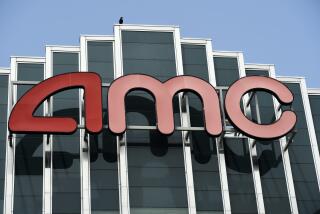AMI Earnings Sharply Lower in Third Quarter
- Share via
American Medical International, which posted its first-ever quarterly loss at the end of February, reported sharply lower earnings again Thursday as hospital chains continue to reel from government and private industry cost-cutting measures.
Despite record revenue of $907.5 million, the Beverly Hills-based hospital chain said its net income declined 59% to $21.5 million for the three months ended May 31, compared to $52.6 million for the third quarter of fiscal 1985.
“The message behind our record revenues and our declining earnings is clear: We are not managing our costs effectively,” Walter L. Weisman, AMI president and chief executive, said in a prepared statement.
“The fact that other major companies in the investor-owned health-care industry are facing writedowns, cost escalations and earnings declines at this time only intensifies our own determination to reverse these negative trends at AMI as forcefully and rapidly as possible,” Weisman added.
Hurt by New Medicare Program
Like virtually all hospital chains in the $400-billion-a-year health-care industry, AMI has been hurt by lower hospital fees from the government under a new Medicare payment system as well as by the rapid growth of alternative health-care providers.
On average, about 50% of a hospital’s gross income comes from Medicare, which has instituted a new reimbursement system that sets limits on how much the government will pay for specific ailments. In addition, privately insured patients increasingly are being lost to health maintenance and preferred provider organizations, which promise lower-cost medical care.
The nation’s largest health-care chain, Hospital Corp. of America, for example, reported that its earnings for the first quarter of 1986 fell 9.7%. And on Tuesday, Los Angeles-based National Medical Enterprises announced that it would sell nine hospitals and undergo a major restructuring in order to improve its sagging bottom line.
AMI, which with nearly 16,000 hospital beds is among the nation’s largest hospital chains, has also attempted to battle its financial woes by selling off medical facilities and cutting costs.
Several Other Cost-Cutting Moves
Results for the third quarter, for example, included an after-tax gain of $8.1 million from the sale of four hospitals and 11 rehabilitation centers operated by its Birmingham, Ala.-based subsidiary.
AMI has also pared fat in areas as varied as reducing reliance on overnight mail service to scaling down its Corporate Point offices in Culver City and making executives double-up at administrative headquarters in Beverly Hills, company sources say.
But the moves don’t seem to have made much of a dent in AMI’s balance sheet.
Although the hospital chain managed to avoid a loss for the third quarter, the results were comparatively worse than the second quarter, analysts said, pointing to AMI’s $115-million writedown of company assets included in the second-quarter results. Without that, they pointed out, AMI would have had second-quarter earnings higher than the third-quarter net reported Thursday.
“They are still struggling and trying to get themselves together,” said Randall Huyser, a health-care analyst at Montgomery Securities. “But they are not making as rapid progress as I like or as I’d think they’d like.”
Overall, for the nine months ended May 31, the company recorded a loss of $31.9 million, compared to net income of $138 million for the comparable period of fiscal 1985. And nine-month gross revenue totaled $2.57 billion, a 32% increase over the $1.94 billion reported for the first nine months of last year.
Analysts say that one reason AMI may be having difficulty adapting to the new health-care environment is its decision to diversify. AMI has launched an ambitious program to start its own HMOs, PPOs and other health insurance plans. It hopes that the plans will funnel patients into AMI-owned hospitals.
It is a risky strategy that could pay big benefits in the long run, said Kenneth Abramowitz, an analyst at Sanford C. Bernstein & Co. in New York. But, so far, those “operations are not producing any earnings for us now . . . (and) probably not for some time,” AMI spokesman Mick Taylor said.
Indeed, the New York-based investment rating agency Moody’s Investors Service on Wednesday slightly downgraded the ratings on AMI’s commercial paper, shelf registration and senior and subordinated debt.
Moody’s said: “The rating changes reflect (AMI’s) increased business risk, attributable in part to an ambitious program of expansion into the health-care insurance business, and its high financial leverage.”
AMI’s slipping financial results produced at least one saving grace: Because the company failed to meet its projected earnings, it got an unexpected tax benefit of $1.8 million in the form of a lower effective tax rate, Taylor said.
More to Read
Inside the business of entertainment
The Wide Shot brings you news, analysis and insights on everything from streaming wars to production — and what it all means for the future.
You may occasionally receive promotional content from the Los Angeles Times.










